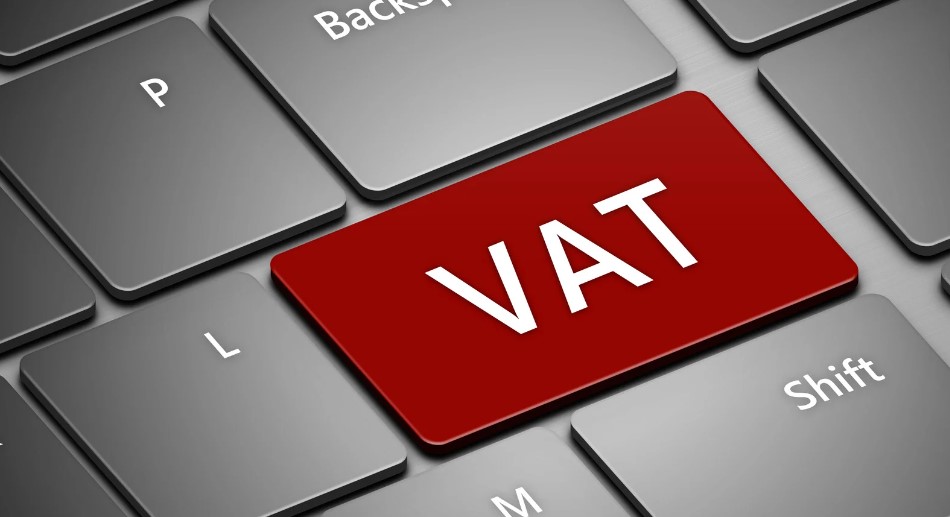If you’re doing business in the UK, it’s important to know how to check if a company is registered for VAT. Value Added Tax (VAT) is a consumption tax imposed on goods and services, and companies with a VAT taxable turnover above £85,000 are required by law to register for VAT. VAT registration lookup is a crucial step to ensure compliance and avoid potential issues with VAT reclaim.
VAT registration numbers serve as unique identifiers for businesses registered for VAT. These numbers are issued by HM Revenue and Customs (HMRC) and are necessary for various purposes, such as issuing VAT invoices and reclaiming VAT. VAT numbers in the UK are 11 characters long, beginning with ‘GB’. In Northern Ireland, VAT numbers start with ‘XI’. It’s essential to perform a VAT checker online to validate a company’s VAT registration.
What is a VAT Registration Number and Why is it Important?
A VAT registration number is an essential identifier issued by HMRC to businesses that are registered for VAT. In the United Kingdom, VAT registration numbers consist of the letters ‘GB’ followed by nine numbers for businesses in England, Scotland, or Wales. Meanwhile, businesses in Northern Ireland have VAT numbers starting with ‘XI’. These unique numbers play a crucial role in various aspects of VAT compliance and administration.
Importance of VAT Registration Number
- Verifying VAT Registration: VAT numbers are used to verify whether a business is registered for VAT. By checking a company’s VAT number, individuals or other businesses can ensure the legitimacy of their VAT registration before engaging in transactions.
- Reclaiming VAT: VAT-registered businesses can reclaim the VAT they have paid on eligible supplies and expenses. To do so, they need to provide a valid VAT invoice, which includes their VAT registration number.
- Issuing VAT Invoices: When a VAT-registered business sells goods or services, they must issue VAT invoices to their customers. These invoices should include the seller’s VAT registration number, allowing the recipient to reclaim VAT if eligible.
Having a VAT registration number is crucial for businesses operating in the UK as it ensures compliance with VAT regulations, allows for the proper reclaiming of VAT, and helps verify the legitimacy of a company’s VAT registration status.

How to Find a Business’s VAT Number?
When it comes to verifying a company’s VAT registration, finding their VAT number is key. VAT registered businesses are required to display their VAT number on invoices, making it the easiest way to obtain this information. Simply check the company’s invoices, and you should find their VAT number prominently displayed. However, if the VAT number is not listed on the invoices or you need to verify it further, you can contact the company directly and ask for their VAT number. It’s always a good idea to double-check the validity of a VAT number before proceeding, as incorrect information can lead to potential issues with VAT reclaim.
Steps to Find a Business’s VAT Number
- Check the company’s invoices: The VAT number should be clearly stated on the invoices issued by VAT registered businesses.
- Contact the company directly: If the VAT number is not visible on the invoices or you need additional information, reach out to the company and ask for their VAT number directly.
By following these steps, you can easily locate a business’s VAT number and validate their VAT registration status. Doing so ensures that you are dealing with a legitimate and compliant company for any VAT-related transactions.
| Advantages | Disadvantages |
|---|---|
| Easy to find on invoices | Possibility of incorrect or outdated VAT number |
| Verification directly from the source | Potential delays in obtaining the information |
| Can establish direct contact with the company | Possible miscommunication or lack of response from the company |
Remember, always validate a company’s VAT registration to avoid any potential issues down the line. Checking a business’s VAT number is an essential step in ensuring compliance and verifying the legitimacy of a VAT registered company.
How to Check if a VAT Number is Valid?

Verifying the validity of a VAT number is essential to ensure accuracy and avoid potential issues with VAT reclaim. Fortunately, there are several reliable methods available to check the status of a VAT number.
HMRC VAT Helpline
If you’re based in the UK, one of the simplest ways to verify a VAT number is to contact the HMRC VAT helpline. The helpline representatives can assist you in confirming the validity of a VAT number and provide accurate information regarding its registration status.
Online VAT Number Checker
An alternative method to check the validity of a VAT number is by utilizing the online VAT number checker provided by HMRC. This user-friendly tool allows you to enter the VAT number in question and receive a prompt response regarding its current status.
VAT Information Exchange System (VIES)
For EU VAT numbers, you can rely on the VAT Information Exchange System (VIES) for verification purposes. VIES enables you to validate the validity of an EU VAT number by entering the relevant details and obtaining instant confirmation.
By utilizing any of these methods, you can confidently check the status of a VAT number and ensure its accuracy. This will prevent the use of invalid VAT numbers that could potentially result in invoice invalidation or difficulties in VAT reclaims.
VAT Registration and Reclaiming VAT
When conducting business in the United Kingdom, understanding the process of VAT registration and reclaiming VAT is crucial. VAT registration is a legal requirement for businesses with a taxable turnover above the threshold, which currently stands at £85,000. Registering for VAT involves obtaining a unique VAT registration number from HMRC.
Once registered, businesses receive a VAT registration certificate, which serves as proof of their VAT registration status. This certificate should be kept safely, as it may be requested by HMRC for verification purposes.
Registered businesses have the benefit of reclaiming VAT paid on goods and services purchased for their business operations. However, to reclaim VAT, a valid VAT invoice is required. This invoice should include essential information, such as the supplier’s VAT registration number, the amount of VAT charged, and a clear description of the goods or services purchased.
Valid VAT registration is not only crucial for reclaiming VAT but also for ensuring compliance with VAT regulations. Reclaiming VAT can provide significant financial benefits for businesses, reducing their overall tax liability and improving cash flow. However, it’s important to note that incorrect or invalid VAT registration details can lead to complications with HMRC and may result in fines or penalties.
To ensure that a supplier’s VAT registration is valid, businesses can undertake a company VAT status check using the HMRC VAT number search facility. This online service allows businesses to verify the legitimacy of a supplier’s VAT registration number before engaging in any transactions. Additionally, businesses can also use a VAT registration number finder to validate their own VAT registration details.
Benefits of Reclaiming VAT:
- Reduced tax liability: Reclaiming VAT on eligible expenses can significantly decrease a business’s overall tax liability, enabling them to allocate more funds towards growth and development.
- Improved cash flow: Receiving VAT refunds promptly can provide businesses with increased cash flow, allowing them to manage their finances more effectively and meet their financial obligations.
- Competitive advantage: Reclaiming VAT can lower business costs, making products or services more competitively priced in the market and potentially attracting more customers.
It’s important for businesses to familiarize themselves with the process of VAT registration and understand the requirements for reclaiming VAT. By utilizing tools such as the company VAT status check and the VAT number finder, businesses can ensure the accuracy of their VAT registration details and protect themselves from potential complications with HMRC.

Conclusion
Verifying a company’s VAT registration is crucial to ensure compliance and avoid potential issues with VAT reclaim. By checking a business’s VAT number and confirming its validity, you can protect yourself from using incorrect VAT numbers and potentially losing out on VAT reclaims.
Remember to use the resources provided by HMRC, such as the VAT helpline and online checker, as well as the VIES system for EU VAT numbers. These tools can help you quickly and easily validate a company’s VAT registration status and ensure that you are working with legitimate businesses.
By taking the time to verify VAT registration, you can avoid costly mistakes and maintain trust and transparency in your business transactions. Stay vigilant and always double-check the VAT numbers provided to you to ensure that they align with the guidelines set forth by HMRC and EU regulations.
FAQ
How can I find a business’s VAT number?
The easiest way to find a business’s VAT number is to check their invoices. VAT registered businesses are required to display their VAT number on invoices. If the VAT number is not listed, you can contact the company directly and ask for their VAT number.
How can I check if a VAT number is valid?
In the UK, you can check if a VAT number is valid by calling the HMRC VAT helpline or using the online VAT number checker provided by HMRC. For EU VAT numbers, you can use the VAT Information Exchange System (VIES) to verify the validity of the VAT number.
How can I ensure the validity of a company’s VAT registration?
Verifying a company’s VAT registration is important to ensure compliance and avoid potential issues with VAT reclaim. By checking a business’s VAT number and confirming its validity through available resources such as the HMRC VAT helpline, online checker, and VIES system for EU VAT numbers, you can protect yourself from using incorrect VAT numbers and potentially losing out on VAT reclaims.




